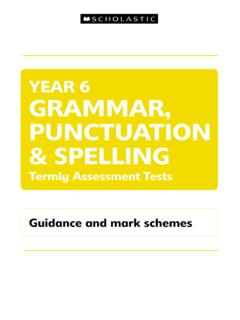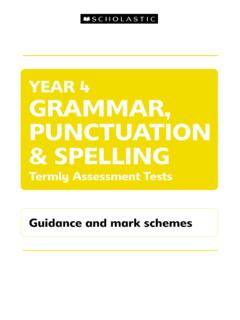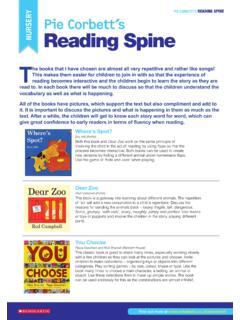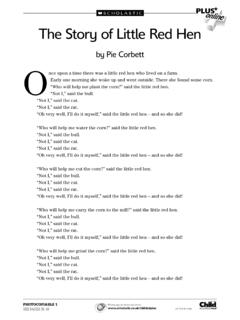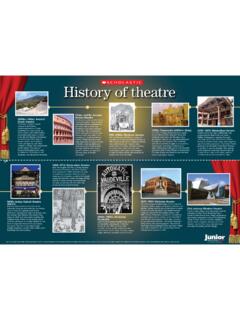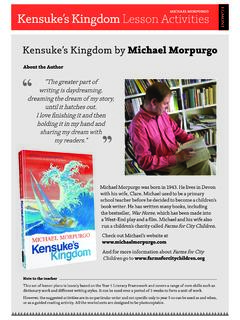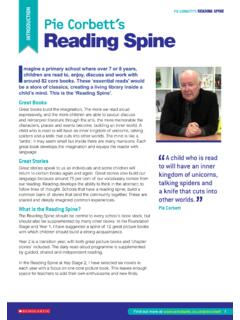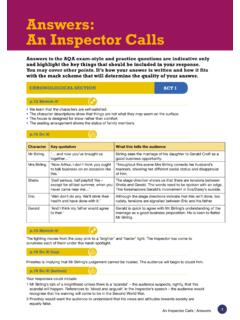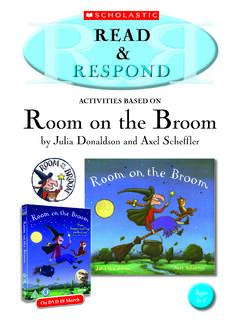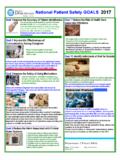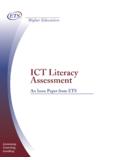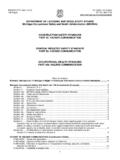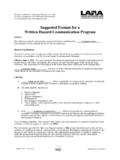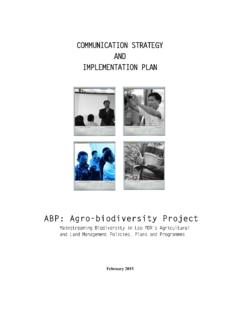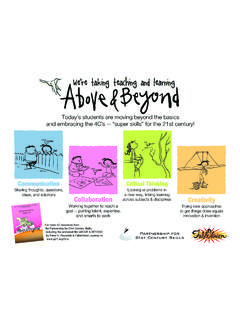Transcription of A2 POSTER NOTES Sharing a Shell song - …
1 Activities across the curriculum Photocopy or download from:PHOTOCOPIABLE 1 Sharing a Shell songCelebrate the tenth World Book Day by exploring this POSTER , designed to accompany the special World Book Day song, written by the popular author Julia Donaldson, based on her story, Sharing a Shell . Using the POSTER Display the POSTER as part of a World Book Day interactive display surrounded by the children s paintings of the characters. Help them to choose the theme for an arrangement of their favourite books. Personal, social and emotional development Look at the image of the three seacreatures on the POSTER and talk about how they are such good friends that they share the same Shell as a home.
2 Discuss the importance of Sharing with friends, and make a list together of ways in which the children share with each other. Explain that, although the creatures look happy on the POSTER , in the story they try to live apart and this makes them so sad that they search for another Shell to live in. Use this story summary to stimulate discussion about the importance of family and friends and how it feels to be lonely. Communication, language and literacy Explain to the children that the author has described the three main characters in the story as the crab , the purple blob and the brush thing . Look at the POSTER and ask the children if these descriptions make it easy to identify which character is which.
3 Invite the children to make up names for the creatures based on their appearance. Tell the story again and discuss what happens at the beginning, middle and end. Ask the children to think of a different story about the three creatures using the POSTER for inspiration. Work together, scribing their ideas and then reach a group decision about what happens in the story. Mathematical development Point to the Shell and talk about how it becomes a home for one when the crab moves in, a home for two when the blob attaches itself to the outside, and a home for three when the brush thing moves in to keep it tidy. Move your fi ngers over the POSTER to indicate the movement of the creatures arriving and settling in.
4 Make up dialogue for them and include the numbers one, two and three. Invite the children to count the creatures on the POSTER . Ask questions to involve simple problem solving, for example, How many yellow fi sh are there? , How many pink ones? , How many orange? , How many are there altogether? , Are there more yellow or more orange? and so and understanding of the world Look at the creatures on the POSTER and help the children try to identify further examples by looking at pictures and reading simple information on websites and in books. Hang the POSTER alongside the water tray. Transform the water tray into a rock pool with green Cellophane weed, shells and plastic sea creatures similar to the ones depicted on the POSTER .
5 Encourage the children to explore the individual features of each creature using small fi shing nets and magnifying glasses. Make comparisons with the artist s interpretation on the POSTER . Physical development Invite the children to pretend to be one of the three creatures on the POSTER . Encourage them to make appropriate movements such as scuttling sideways like crabs, sliding along like slugs and waving tentacles like a sea anemone. Ask individuals if they can guess what creatures the other children are imitating. Talk about how the three friends on the POSTER moved around together in the story, searching for food. Encourage the children to try to do the same thing by moving around in groups of three, holding on to each other all the time.
6 Ask them whether it is easier to move together or to move alone. Can they say why this is?Creative development If possible, ask someone to play the music at the back of the book and sing the words of the song together. Alternatively the song is available at where you can sing along with Julia Donaldson. Look closely at the creatures on the POSTER . Invite the children to paint them using swirly movements for the Shell , wavy movements for the tentacles of the sea anemone and short spiky movements for the hairy creature. Cut them out and make an undersea scene to display alongside the POSTER . Jean Evans is an early years consultant and 2007 NURSERY EDUCATIONA2 POSTER NOTESNE107_back_sharing the 111/01/2007, 07:53:33
